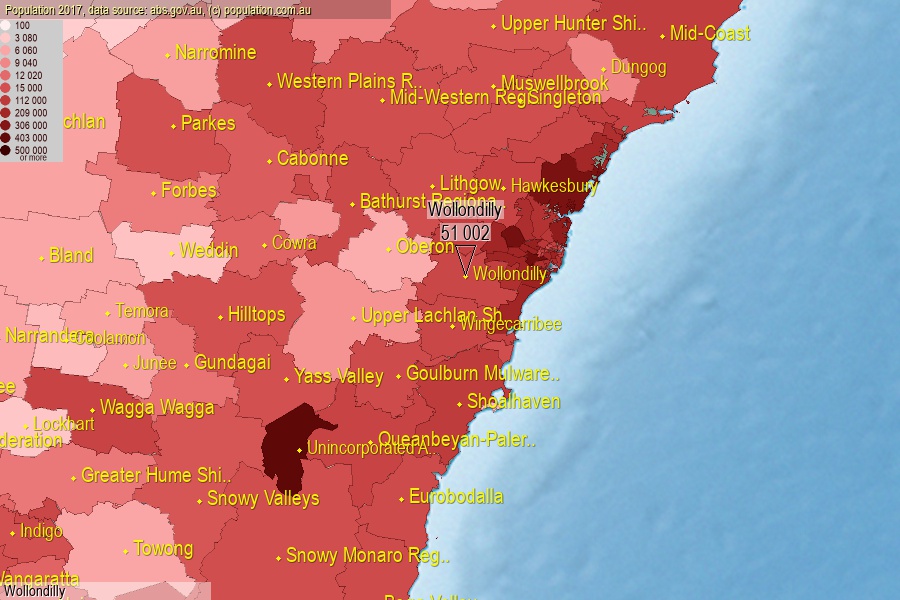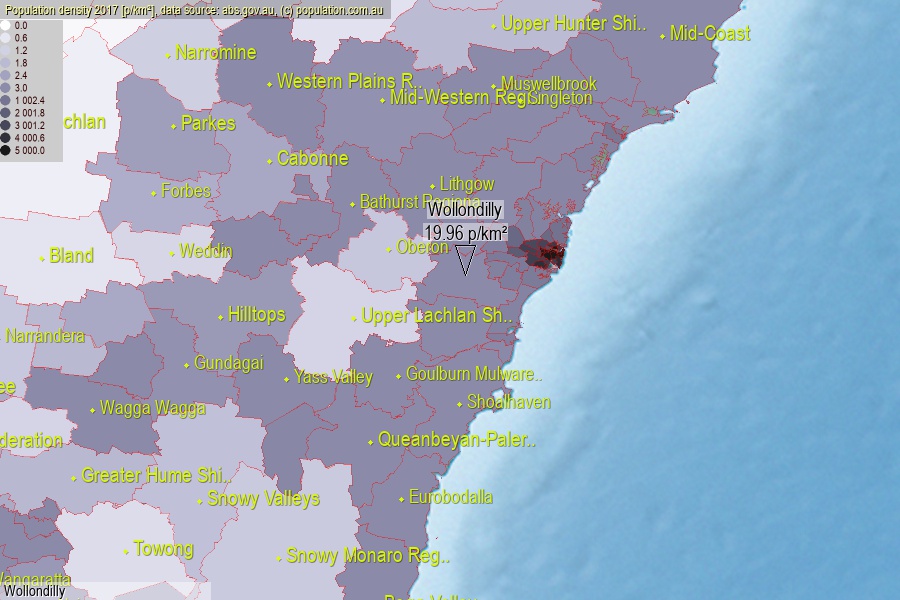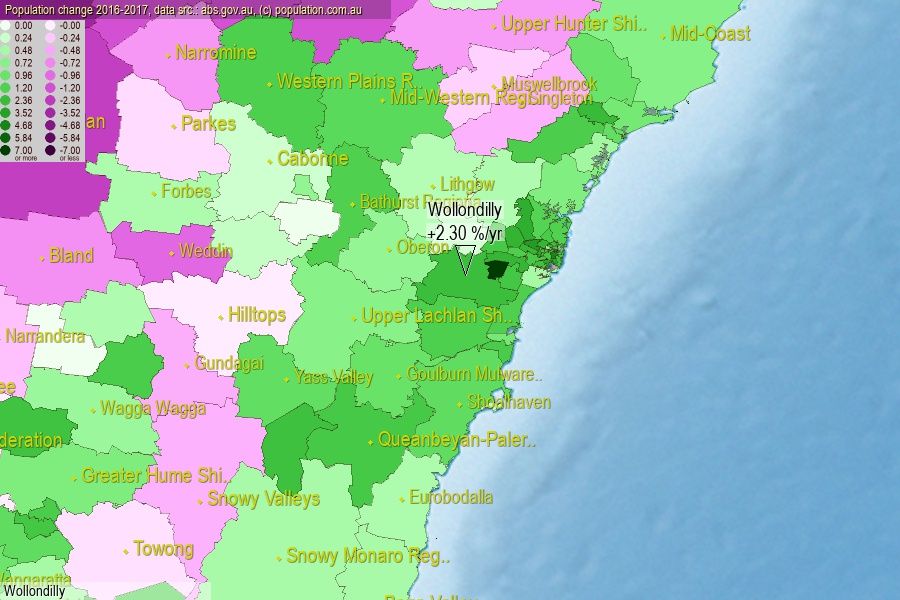 population.com.au
population.com.auLast official estimated population of Wollondilly Area (as Local Government Area) was 51 002 people (on 2017-06-30)[2]. This was 0.21% of total Australian population and 0.641% of NSW population. Area of Wollondilly is 2 555.40 km², in this year population density was 19.96 p/km² . If population growth rate would be same as in period 2016-2017 (+2.3%/yr), Wollondilly population in 2025 would be 61 191. [0]



Click to enlarge. Wollondilly is located in the center of the images.
Population [people], population density [p./km²] and population change [%/year] [2]
[1996-2001] +2.00 %/Y
[2001-2002] +0.88 %/Y
[2002-2003] +1.82 %/Y
[2003-2004] +1.57 %/Y
[2004-2005] +1.46 %/Y
[2005-2006] +1.38 %/Y
[2006-2007] +1.51 %/Y
[2007-2008] +1.95 %/Y
[2008-2009] +1.75 %/Y
[2009-2010] +1.58 %/Y
[2010-2011] +1.78 %/Y
[2011-2012] +1.87 %/Y
[2012-2013] +2.11 %/Y
[2013-2014] +2.25 %/Y
[2014-2015] +2.35 %/Y
[2015-2016] +2.66 %/Y
[2016-2017] +2.30 %/Y
[0] Calculated with linear interpolation from officially estimated population
[1] Read more about LGA and Australian Statistical Geography Standard (ASGS) on abs.gov.au
[2] Population data from Australian Bureau of Statistics (Population and density: 2017; change: 2016-2017)
[3] Digital Boundaries: Australian Statistical Geography Standard (ASGS) 2016.